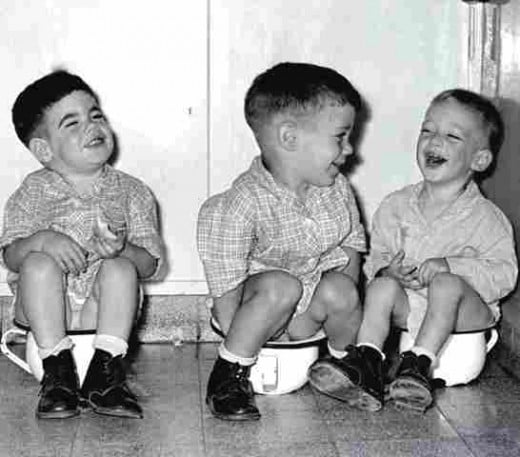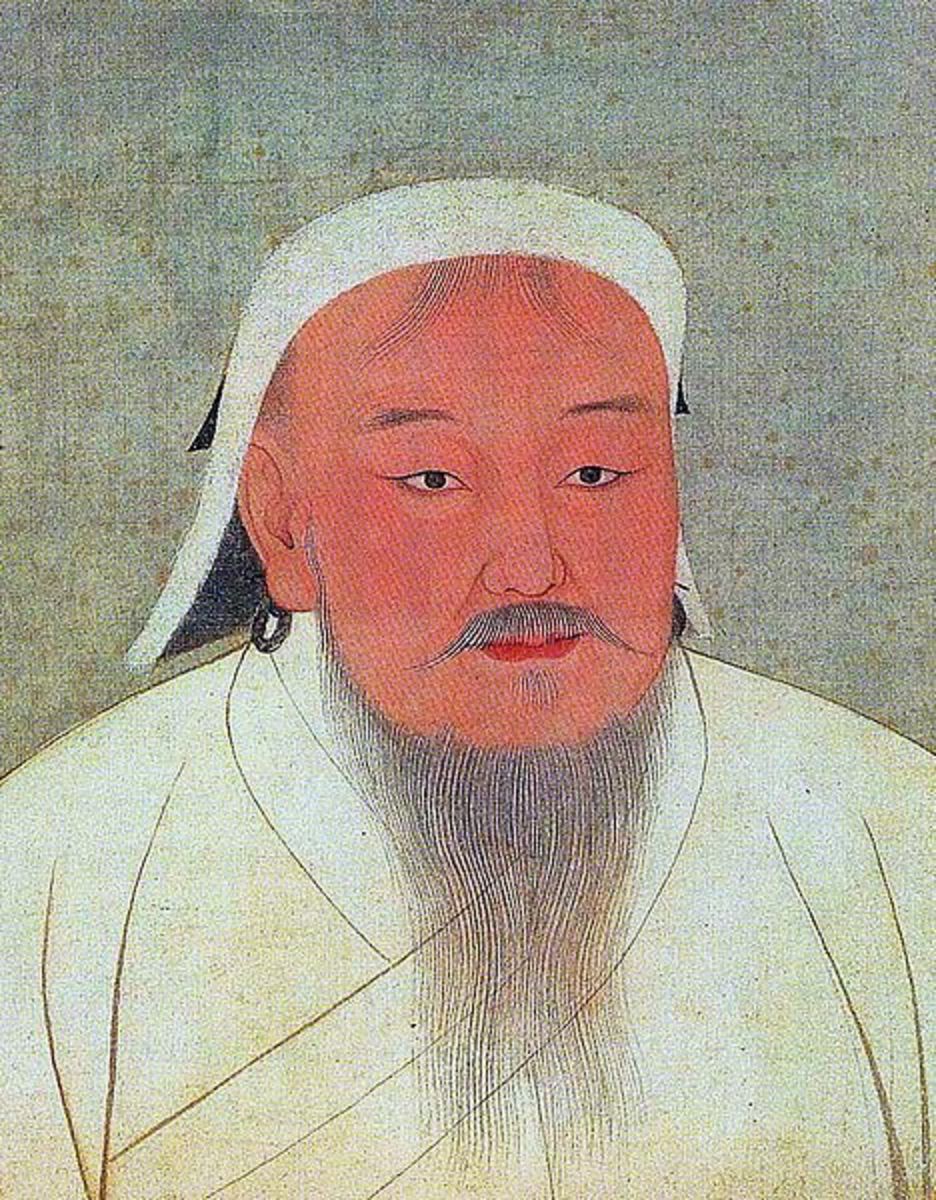- HubPages»
- Education and Science»
- History & Archaeology»
- History of the Modern Era
Pee Power for Hydrogen Fuel Cells: It Isn't the First Use of Urine in Human History

We can pee to go instead of going to pee
It seems that hydrogen for fuel cells can not only be extracted from water, but it can be even more easily extracted from urine. This is because urine contains two ingredients that have looser hydrogen bonds than water, ammonia and urea. Dr. Gerardine Botte, a professor at Ohio University, and her team have discovered this use for the copious amounts of urine that flows from every living mammal.
Put an electrode in urine, add a small current, and you have hydrogen gas for a fuel cell. It could be used wherever people gather. For example, in an airport, the people could provide some of the power to run the buildings. After all, what's the first thing that people want to do when the plane lands? I don't know about you, but my first destination when I land isn't the luggage carousel. It's a long anticipated visit to the bathroom.
Each of us produce about 2 1/2 liters of urine a day. Our urine is currently considered a waste product. In the amounts that large populations of humans and feedlot animals produce, it's also a pollutant.
But that waste could be turned into an energy source. For example, a two story building containing 200-300 workers could have about 2 of its kilowatts provided by their waste water. Granted, that wouldn't do a lot, but it would probably keep the lights on.
This means that where large numbers of humans gather, we would bring along our own ready source of fuel. Also, the incredible amounts of urine that are polluting our water from the beef and pork industries might actually become useful. A thousand cattle in a feedlot could produce about 50 kilowatts of power.
The first customers for this process would be cities. They could both treat wastewater to clean it of ammonia, and could produce hydrogen and nitrogen at the same time. This would not only provide energy, but it would stop the algae blooms and dead zones that plague rivers and bays all over the world.
Dr. Botte and her team are not the only group working on this concept. In England a team led by Dr Ioannis Ieropoulosare is working on microbial fuel cells that are more directly powered by urine. Their process would also clean the urine while energy was being produced. And in the Netherlands another team is also working on urine to produce energy.

Urine - what is it made of?
Before we continue on this topic, let me remove a myth. Urine is not like feces; it is not loaded with bacteria. Unless you have one of two very specific diseases, neither of which are common in developed countries, your urine is sterile as it leaves your body. It has a smell, because it contains urea, which is a natural compound left over from metabolized nitrogen. When urea is dissolved in liquid, it gives off ammonia, which has an acrid odor. (When it's dry, it gives off no odor.)
Urinating, or micturition, is the primary way we remove not only excess fluid from our bodies, but nitrogen and urea, which are by-products of cellular metabolism. We also balance our electrolytes, such as salt and potassium, and we eliminate water-soluble chemicals and water-soluble toxins through our urine. When we urinate, it contains additional ingredients, such as antibodies and hormones.
We are designed to keep our bodies properly hydrated and chemically balanced partially via drinking and urinating. For example, when we have too much sugar in our bloodstream, we also become very thirsty so we can urinate more frequently, in an attempt to remove the excess sugar. That's why excess thirst and urination are symptoms of diabetes.
The urea in urine is made in the liver during metabolism and is carried through the blood to the kidneys. There it is filtered out, still suspended in liquids, and is removed from the body via urination.
Urea as a solid material is a pretty neutral compound. It takes so much solid urea to make a lethal dose for a rat that, if the rat was wanted dead, it would be better to hit it over the head with a block of urea than to try to poison it.
Unfortunately, the ammonia that urea gives off in the presence of water as it breaks down is not so non-toxic. In diluted form it makes a good household cleaner and is safe to use on clothing. However, it can be quite deadly if too concentrated, and, in a very concentrated form, it is even used to etch metal. So the solid urea and the gas ammonia are two very odd companions.
While urine is sterile when it leaves the body, after urine stands for a while, that whole picture changes. It becomes a disgusting bacterial soup. Why? Because urine is one of the best nitrogen-based fertilizers there is. Both plants and animals grow with its aid. As the urine stands for a while, bacteria that float through the air and that were already in the container before the urine was poured into it have a huge population explosion. They love the nitrogen in the urea, and they positively wallow in it.
Anyone with a lawn that dogs love to urinate on knows the fertilizer quality of urine from the higher tufts of grass in those favorite doggie spots. (Of course, too much urine can burn a lawn, too.)
Urea can be, and is, made artificially for mass production. It was the first organic compound made artificially, and Friedrich Wohler, the chemist who made it in 1727, is considered the father of organic chemistry. His ability to make urea outside of a living body disproved the belief that only the body could make it.

Modern uses for urea and ammonia
Because it has so many modern uses, gargantuan amounts of urea are made outside of the body today. (When you think of the uses below, realize that you put urea all over your own body with no repulsion.)
Urea is used extensively in agriculture, in nitrogen-based fertilizers. (If we separated our urine from other sewage today, we could simply mix it with water and put it on our plants. If you want to try it, mix one part urine to five parts water and either water the roots or spray the foliage. But, guys, don’t urinate directly on your plants. It’s too strong undiluted unless you've been drinking a lot.)
It's also used in animal feed, because it helps them to grow faster, just as it does plants.
If you think that you would never have urea in your mouth, think again. It's an extremely cheap additive to food, which assists in browning. If you like pretzels, they get that delicious brown look by the action of urea in the dough. (I helped some friends who were opening a new bakery once, and expected great smells from the baking. They made cookies, and it smelled like hot diapers were in the oven.)
If you use a hair-removing lotion, it more than likely contains a high concentration of urea.
If you smoke, your cigarettes taste better because they contain urea.
It's also used in explosives, dish soap, tooth whitener, hair conditioner, moisturizer, glues and a myriad of other compounds that you would never suspect.

Practical uses of urine throughout history
Because the urea in urine is so useful, it has found many uses throughout the ages.
In ancient times, the Chinese added urine to gunpowder and other explosives to give it extra kick. Urea was required to make salt peter, a main ingredient in gun powder.
The Romans in Pompeii washed their clothes in urine. Urine provides a natural ammonia. And it works; the Romans used it for hundreds of years. They weren't the only ones.
The Europeans in the Middle Ages didn’t consider bathing a high priority - it was actually considered unhealthy and an invitation to sin - , but they were fastidious about their linens. That’s right, dirty body, clean linens. All linens received the urine treatment; petticoats, shirts, table clothes, and those massive white ruffled collars. A greasy food spot on a white linen collar or ruffle was a faux pas. Into the urine it went, and it stayed for a day or so. When you see old paintings of Europeans with their stiff linen collars, or lots of ruffles down their fronts and at their sleeves, that linen is snowy white because it was regularly soaked in urine. (What did it smell like? Well, that probably depended on how well it was rinsed.)
If you add ammonia to remove a grease spot from your clothes, you're doing about the same thing that the Europeans did with urine in the Middle Ages. The biggest difference is that you've paid for your ammonia and the Europeans didn't pay for theirs.
Urine was used extensively in the wool industry. The story goes that men returning from the pub used to, as a community service, urinate in huge vats where wool was processed. The wool was soaked in it, because stale urine broke down the lanoline and other oils in wool so it could be cleaned, and softened the fibers before spinning and weaving.
Urine was also used in dying different colors, such as clear yellow, lichen, a red known as Orchil, and indigo. The indigo (deep blue) dying trade counted on urine that was extra-stale for many centuries, and people would actually want a faint whiff of the stale urine smell to guarantee that this was indigo-dyed. When a new method of dying wool deep blue was discovered, the smell was created artificially so people would buy the indigo-dyed wool, until they slowly became used to buying blue wool without the smell.
There is actually a recipe for mixing urine with Fuller’s earth (diatomaceous earth) as a cleanser. (Did it work better than Ajax or Comet? If you try it, let the rest of us know.)
Urine is one of the best natural fertilizers. In old China, people would come around to homes to pick up the urine and feces that were deposited in pots overnight. They were called "honey pots", and they went from the chamber pots to the fields, where they fertilized food crops.
It was used regularly in cosmetics, as it was considered very good for the skin. In addition, it was an eye wash in several countries, where it was thought to promote bright, clear eyes.
Stale urine was also used extensively in tanning hides, to remove the hair and to soften the leather.
It also flavored 17th century ale. (Not a savory thought, but maybe a savory flavor.)
One of the terms used for urination, "piss", was actually created before the 14th century as a commonly used term that came from the actual sound of urinating, but is considered vulgar now.
In ancient Rome, the poor urinated in pots in latrines, and it was collected by city contractors. Then it was sold to wool dyers, launderers, tanners and other businesses. At that time, the urine tax was imposed and they paid it.
Nero actually imposed the tax, but Vespasian's name is commonly associated with it. This is because his son was supposed to have complained about the urine tax because it came from such a smelly source. Vespasian held up a gold coin and asked him if he was offended by the gold. When he said that he wasn't, Vespasian replied, " Pecunia non olet". It essentially means that money doesn't smell bad, or that the value of money isn't tainted by its origins. This reply became so famous that bathrooms in Italy (vespasiani), France (vespasiennes) and a few other countries are named after Vespasian. (He's even more famous than Thomas Crapper, whose name was stamped on most early toilets.)

Medicinal uses of urine in history
Urine is also a great antiseptic. It was boiled down and used extensively by ancient Scandinavians for a salve.
The Chinese, Japanese, and Aztecs all independently found that rubbing fresh urine from children or babies on the gums or using it as a mouthwash worked to treat periodontal disease.
Stale urine mixed with wood ash was used to cure diaper rash and other skin rashes, and it was recommended that children's faces be washed with it. It was said to help to keep acne down.
Pliny the Elder in ancient Rome advised using it on all kinds of skin conditions, as well as washing burns and open sores with fresh urine to prevent gangrene. Soldiers in battle also washed wounds by urinating on them. Thomas Vicary, who was Henry VIII's surgeon, officially recommended that English soldiers urinate on all battle wounds. When you consider that fresh urine was one of the only sterile liquids around then, and that the ammonia in urine acts as a mild cleansing agent, that wasn't a bad idea.
Urine was routinely used to reduce the sting of insect bites, and to clean animal and snake bites.
In the 1500's, an Italian doctor who was known as a real innovator in his time saw a man's nose sliced off in an argument. He urinated on it, picked it up and sewed it back onto the man's face.
In France, when women were known to have the "vapors", they were advised to drink a few drops of their urine to help reduce the problem.
In World War I, the best protection against chlorine gas in the trenches was ammonia. So when the gas warning was given or the men saw mist coming toward them, they would quickly urinate on the cloth filters before putting them into their gas masks.
There have been many stories where people have survived for days by drinking their own urine. However, training manuals now say that this adds to thirst because of the concentrated salts in the urine as it becomes more and more concentrated. The manuals advise wetting a cloth and putting it on your head and the back of your neck to cool you.
Of course, urine was also used throughout history as a means of telling how healthy a person was. It was checked by midwifes, physicians, other healers and by royal urine watchers for many thousands of years. As early as 6,000 years ago, ancient texts described the benefits of looking at urine to verify the health of a patient. That use has been continuous up to today.
Of course, many qualities of health that were supposedly associated with urine were not accurate, (Hippocrates associated bubbles in urine with boils), but some are still good today. For example, malodorous urine indicates infection.
Another medical test of urine that has been consistently good from ancient times is checking whether or not it is sweet, which means that it contains glucose. However, the healer didn't use a diabetes test strip to test the urine. The healer tasted the patient's urine to see if it was sweet. If so, the patient had diabetes.
urine therapy
Urine therapy - drinking your own urine
Throughout history, as well as in the present, people have believed that it is beneficial to drink their own urine. This is called urine therapy.
In ancient Egypt, China and India, people used to drink their own urine as a means of maintaining their health. It was practiced in Europe, too. In England, both Robert Boyle and Thomas Willis, famous doctors of their time, were known to advise it.
Today, in India, the practice of drinking urine for health is called Shivambu. This originated as a Hindu healing measure.
When the Aids crisis hit, one of the ways that people suffering from Aids tried to keep their own antibodies was by drinking their own urine. Some claimed to have extended their lives by doing this, but the claims were never verified.
Because it contains antibodies, fluids that have circulated through the blood and lymph systems, vitamins, minerals and hormones, it's considered very balancing to the body. Today, as in ancient times, urine therapy has spread throughout the world.
If you want to try this practice, be my guest. If you do, save and drink only the middle stream, not the first and not the last. Gather the urine and drink it first thing in the morning. And please, don't wait for me.
If you're wondering why I haven't included any common medical tests here or symptoms of medical conditions that can be discovered via urine, it's because they are already well represented in HubPages. See below for some other great information on urine.










